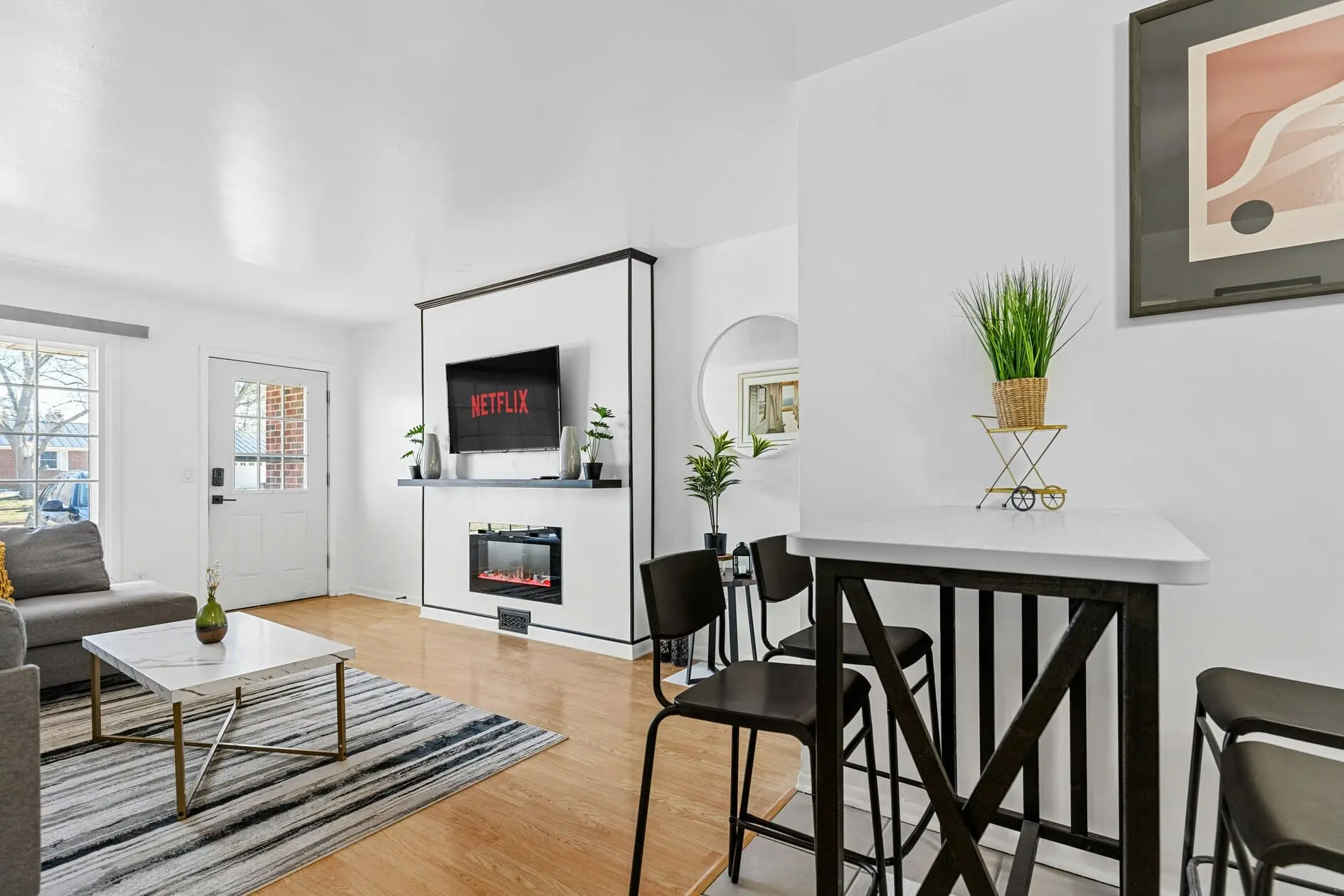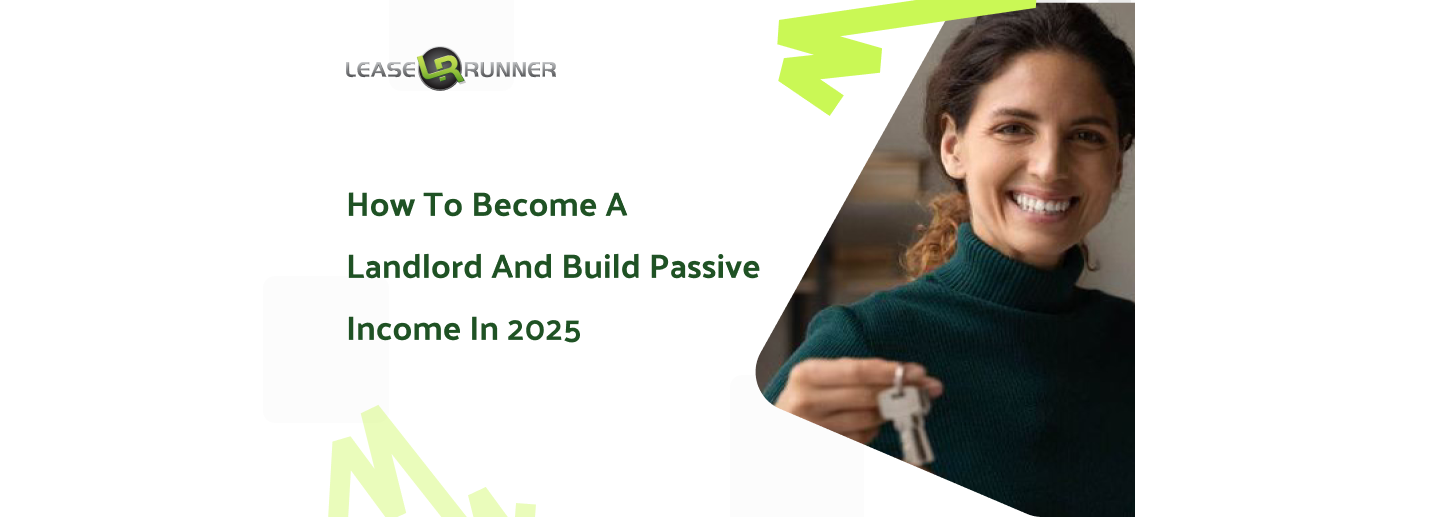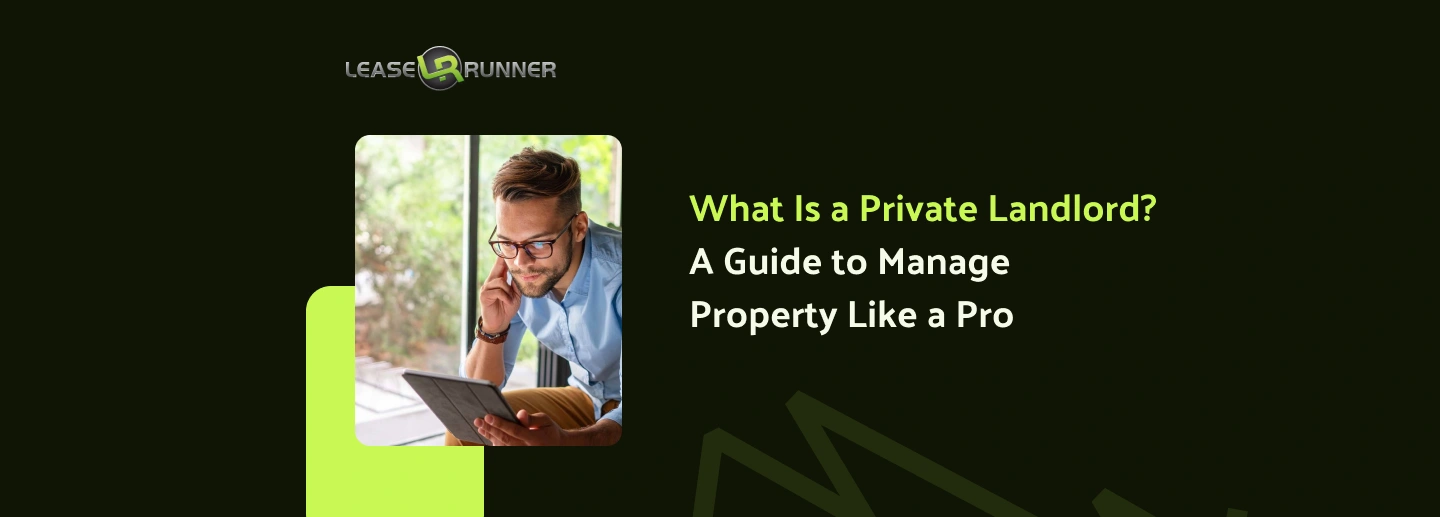The question of “How to become a landlord?” has become trendy these days since there are many people who want to earn extra income without working full-time. You can do this by becoming a landlord. In 2025, owning or managing a rental property can give you a steady, passive income if the numbers are right..
This guide takes you through 12 clear steps to become a landlord, from finding the right property to successfully managing tenants like a professional landlord. You will learn what a landlord is, the benefits of owning rental property, and how to start even if you do not have a lot of money. We also answer common questions like "Can you be a landlord without owning the property?" and "How much money does it cost to become a landlord?".
In addition, many new landlords want to start with little money. This guide shows how to buy a foreclosed home without cash and gives practical tips on being a landlord for managing your property.
What Is a Landlord?
First, what is landlord?
A landlord is someone who owns and rents out property to tenants. Landlords can own various types of assets, including houses, apartments, office spaces, retail stores, warehouses, or even land. These properties can be leased to individuals, families, or businesses, depending on the type of space.
The landlord plays a key role in managing the property and maintaining a good relationship with tenants. This can be:
- Handling repairs
- Setting fair lease terms
- Responding to tenant concerns
Why Should You Consider Becoming a Landlord?
For one, it’s a pretty solid way to build wealth. You’ve got a property that, over time, can appreciate in value, and you’re getting rent money every month. Plus, being a landlord means you’re in control of your finances. No more relying on a 9-to-5 job to pay the bills. You’ve got an asset that can provide steady cash flow, and if you play your cards right, you could see your wealth grow in ways that stock investments or regular savings just can’t match.
And let’s not forget about the freedom it gives you. You can decide how hands-on or hands-off you want to be. The flexibility is pretty sweet.
How to Become a Landlord in 12 Easy Steps?

Below is a simple, step-by-step guide on how to become a landlord. Follow these steps to move from planning to earning rental income.
1. Research and Understand Landlord-Tenant Laws
Before anything else, learn the rules that govern renting where you live. These laws protect both landlords and tenants, covering things like how much notice you must give before entering the property, security deposit rules, and eviction processes.
- Entry Notice: You can’t just show up at your property unannounced. Typically, you’ll need to give tenants 24-48 hours’ notice before entering.
- Security Deposits: You can charge a deposit, but there are limits on how much security deposits, and you must return it (minus any damages) within a certain period after the tenant moves out.
- Repairs & Maintenance: As a landlord, you’re responsible for keeping the property safe and in good condition.
- Fair Housing: You can’t discriminate against tenants based on race, gender, religion, or other protected categories.
2. Assess and Prepare Your Rental Property
Before you start renting out your property, you should do a thorough check to ensure everything is in good condition. Look over your property carefully. Is everything working like plumbing, heating, and electricity? Are there safety features like smoke detectors?
- Complete a Thorough Inspection: Walk through every room, checking for any visible damage like cracks, leaks, or wear and tear.
- Check Appliances and Utilities: Test all major appliances (oven, refrigerator, dishwasher, etc.) to make sure they’re working as they should.
- Ensure Safety and Habitability: Check that smoke detectors and carbon monoxide detectors are installed and working in key areas of the property.
Fix any problems and give the place a good cleaning or even a fresh coat of paint. A well-prepared property attracts better tenants and helps you charge a fair rent.
3. Determine the Right Rental Price
Setting the rent too high will create trouble finding tenants, but if too low, you won’t cover your costs. Research similar rentals in your area online or ask local real estate agents to find a competitive price. Consider the property’s size, condition, and location.
4. Secure Appropriate Landlord Insurance
Standard homeowner’s insurance usually doesn’t cover rental situations. Get landlord insurance to protect yourself against property damage, liability if someone gets hurt, or loss of rent if the place becomes uninhabitable. It’s a small cost that can save you big trouble in the long run.
5. Choose Your Property Management Approach
Decide if you want to manage the property yourself or hire a property manager. Doing it yourself saves money but takes time; you’ll handle tenant calls, maintenance, rent collection, and legal paperwork. A property manager handles these tasks for a fee, usually a percentage of the rent.
6. Create an Effective Rental Listing
To make your rental listing stand out and attract the right tenants, you need to focus on creating an informative and appealing ad.
- Property Details: Clearly list the basics: the number of bedrooms, bathrooms, square footage, and type of property (house, apartment, etc.).
- Photos: Take pictures of each room, as well as exterior shots of the building and yard (if applicable).
- Description: Write a concise but compelling description. Highlight the key features, such as updated kitchen, spacious living areas, or great natural light.
- Neighborhood Highlights: Mention the vibe of the neighborhood (quiet and residential, or lively and urban), so prospective tenants can get a feel for the area.
- Tenant Requirements: Specify any key criteria for tenants, such as income requirements, credit score, or pet policies.
- Availability and Terms: Clearly mention any utilities or services included (like water, internet, or trash removal).
- Contact or Application Instructions: Make it easy for potential tenants to reach you by providing clear contact info (email, phone number, or rental platform).
7. Thoroughly Screen Prospective Tenants (with LeaseRunner)
Finding reliable tenants is key. Check their background, credit history, employment, and references. Using a screening service like LeaseRunner helps you verify information quickly and legally. Good tenants pay rent on time and take care of your property.
- Comprehensive Background Checks: LeaseRunner runs detailed background checks, including criminal records, to ensure potential tenants have a clean history.
- Credit Report Verification: You’ll get a full credit report to assess their financial responsibility and ability to pay rent on time.
- Legally Compliant: LeaseRunner ensures the screening process follows all local and federal regulations, reducing the risk of legal issues.
- Secure and Confidential: All personal and financial information is handled securely, maintaining privacy and compliance with data protection laws.
- Automated Reports: Receive easy-to-read reports that summarize all the key information in one place.
8. Draft and Sign a Comprehensive Lease Agreement
Your lease is the contract that sets the rules. Include details like rent amount, due dates, security deposit terms, maintenance responsibilities, and what’s allowed or not (like pets or smoking). A clear lease protects you and your tenants!
9. Collect Security Deposit and First Month’s Rent
Always collect a security deposit before tenants move in, this covers any damage or unpaid rent later on. Also, you should get the first month’s rent upfront. Make sure to follow your state’s rules on how much deposit you can charge and how you handle it.
10. Conduct a Detailed Move-In Inspection
Walk through the property with your tenant before they move in. Note any existing damage or wear and tear in writing and take photos. This protects both of you and makes it easier to settle disputes when they move out.
11. Establish Rent Collection and Communication Systems
Set up a system for collecting rent that’s convenient for both you and your tenants. Many landlords use online payment platforms nowadays. Also, establish clear ways to communicate (whether by phone, email, or text) and be responsive to tenant concerns.
12. Maintain Property and Foster Good Tenant Relations
Keep the property in good condition by handling repairs quickly and regularly checking for issues. Treat your tenants with respect and professionalism. Happy tenants are more likely to stay longer and take care of your property.

How Much Money Do You Need to Get Started as a Landlord?
You don’t need hundreds of thousands of dollars to become a landlord. In many U.S. markets, you can realistically get started with $20,000–$30,000 in upfront capital. This range covers:
- The down payment (15–25%)
- Closing cost (2–5%)
- Repairs/ Renovation
- Cash reserves
- Insurance & Property taxes
Initial Investment Costs
You need at least 20% of the home’s appraised value for a down payment, about 2-6% for closing costs, and repairs or renovations if needed. These costs change with location. In some areas, you may spend only a little. In others, you may need much more. It is important to research your area and create a budget. This helps you know how much money it takes to become a landlord.
- In states like Missouri or Indiana, closing costs may run as low as 0.7% to 1.0% of the home’s purchase price
- In areas with higher taxes and fees such as Delaware, Pennsylvania, New York, or Washington, D.C., closing costs can reach 4–6% of the sale price
- Lender-related fees (like originations or points) are shaped by both federal guidelines and state lending laws.
How to Buy a Foreclosed Home with Minimal Cash?
Many people also wonder, "How to buy a foreclosed home without cash?" Foreclosed homes often cost less than market homes. You can use creative financing options. Seller financing, partnerships, or government-backed loans can help you reduce the cash you need.
- FHA 203(k) Loan (Government-Backed Renovation Loan): This loan is perfect for buying distressed or foreclosed homes that need repairs. It’s best for first-time buyers with limited cash who are willing to live in the property for at least 12 months.
- Partner with an Investor: Team up with someone who provides the capital while you handle the research, renovation, or property management.
- Seller Financing: While rare with bank-owned foreclosures, some private sellers of distressed homes or auction buyers offer flexible payment terms.
These ideas are part of learning how to become a landlord when you have limited funds.
Avoiding Common Mistakes and Bad Landlord Practices
Becoming a landlord can be rewarding, but it’s easy to make mistakes that cause problems or cost you money. You can easily fall into these common unless you know these practices:
- Not screening tenants properly: Always check backgrounds, credit, and references. Renting to the wrong tenant can lead to late payments or property damage.
- Ignoring legal requirements: Follow landlord-tenant laws closely. Missing deadlines or skipping required notices can cause legal trouble.
- Setting the rent too high or too low: Research the local market to find a fair price. Too high scares tenants away; too low hurts your income.
- Skipping regular maintenance: Fix issues promptly. Ignoring repairs leads to bigger costs and unhappy tenants.
- Poor communication: Keep clear, respectful communication with tenants. This builds trust and helps resolve problems quickly.

Creative Ways to Become a Landlord with Minimal Capital
If you have little money, you still have options. Here are some creative ways to start:
- Partnerships: Work with friends or investors to pool money and share risks.
- Seller Financing: Find sellers who offer flexible financing options. This can lower your upfront cost.
- Lease Options: Some deals allow you to lease a property with an option to buy later. This lets you control property without a big down payment.
- Property Management for Owners: Manage properties for others. This helps you learn how to become a landlord while earning a fee, even if you do not own the property yet.
- The BRRRR Method (Buy, Rehab, Rent, Refinance, Repeat): Start with a distressed property, fix it up, rent it out, then refinance to recover your investment. It requires planning and access to financing, but it’s a powerful way to grow your portfolio with limited capital.
- Property Management for Owners: You can offer to manage properties for other landlords. You earn income, gain hands-on experience, and build valuable relationships in the industry.
- Hard Money or Private Loans: Use short-term, asset-backed loans from private lenders to fund property purchases or renovations. These loans often have flexible terms but require a solid exit strategy and clear plan for repayment.
- Backdoor Rental ("Move and Rent"): Turn your current home into a rental. Instead of selling it when you move, keep it and rent it out.
- Home Equity Line of Credit (HELOC): The strategy taps into the equity of a property you already own (even your primary residence) to fund the purchase or renovation of a rental property. It’s a creative way to use existing assets to generate new income.
- House Hacking: Live in one part of the property and rent out the rest. Your tenants help cover the mortgage while you gain landlord experience and build equity.
You can become a landlord without owning property by using creative strategies like rental arbitrage, lease options, or property management services. These approaches require limited upfront capital, and they allow you to generate rental income, gain real-world experience, and build a property portfolio over time.
Conclusion
In 2025, you have a real chance to earn a steady income by becoming a landlord. Follow the suggested steps, from setting your investment strategy and finding the right property to financing, preparing your home, setting the rent, and managing tenants, and you will know exactly how to become a landlord.
With hard work and careful planning, you can build a successful rental business and enjoy a steady stream of passive income. For more help, read trusted guides on tenant screening and rental management. These resources will support you as you learn how to become a landlord and build your rental empire. Start today and watch your income grow.
FAQs
Q1. What is a landlord, or what does it mean to become a landlord?
A landlord is a person who rents property to tenants, manages the property, screens tenants, and handles repairs. Being a landlord means you own or manage a property and rent it to tenants. You can earn money from the rent and handle maintenance.
Q2. How do I get started with a rental property?
Start by planning your investment strategy, researching available properties, securing financing, and then following the steps in this guide.
Q3. How to become a landlord successfully?
Stay organized, invest in quality properties, treat tenants fairly, and continue to learn about property management. These practices help you learn how to be a successful landlord.
Q4. How do you make money as a landlord?
You earn money by collecting rent, covering your expenses, and building equity over time. This explains how you make money as a landlord.
Q5. What are the steps to become a landlord?
You need to define your strategy, find the right property, secure financing at a rate that will make your investment profitable right after the purchase,, prepare the property, set a competitive rent, market it, and manage your tenants.







